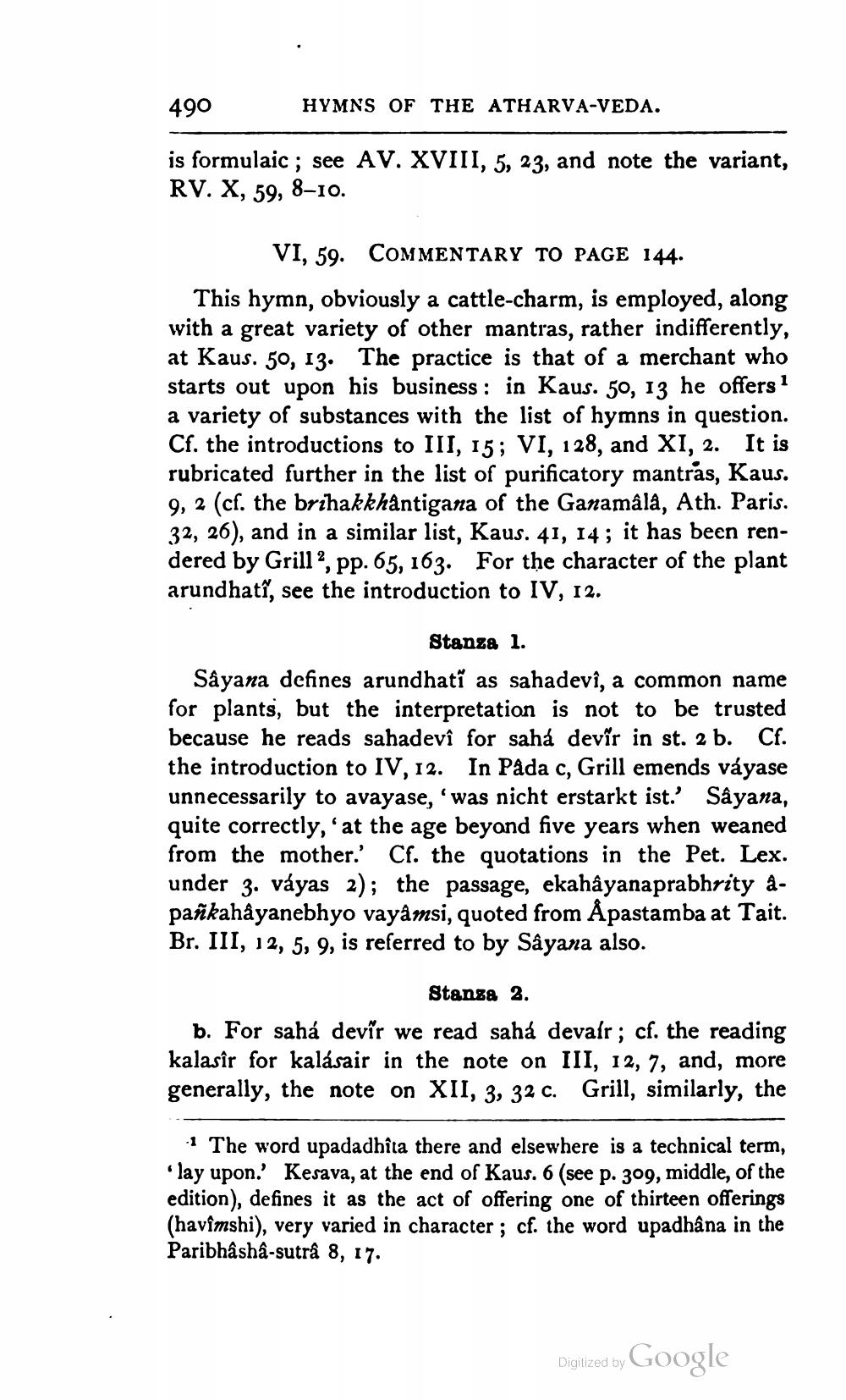________________
490
HYMNS OF THE ATHARVA-VEDA.
is formulaic; see AV. XVIII, 5, 23, and note the variant, RV. X, 59, 8–10.
VI, 59. COMMENTARY TO PAGE 144. This hymn, obviously a cattle-charm, is employed, along with a great variety of other mantras, rather indifferently, at Kaus. 50, 13. The practice is that of a merchant who starts out upon his business : in Kaus. 50, 13 he offers 1 a variety of substances with the list of hymns in question. Cf. the introductions to III, 15; VI, 128, and XI, 2. It is rubricated further in the list of purificatory mantras, Kaus. 9, 2 (cf. the brihakkhântigana of the Ganamâlâ, Ath. Paris. 32, 26), and in a similar list, Kaus. 41, 14; it has been rendered by Grill?, pp. 65, 163. For the character of the plant arundhati, see the introduction to IV, 12.
Stanza 1. Sâyana defines arundhati as sahadevi, a common name for plants, but the interpretation is not to be trusted because he reads sahadevî for sahá devír in st. 2 b. Cf. the introduction to IV, 12. In Påda c, Grill emends váyase unnecessarily to avayase, 'was nicht erstarkt ist.' Sâyana, quite correctly, at the age beyond five years when weaned from the mother.' Cf. the quotations in the Pet. Lex. under 3. váyas 2); the passage, ekahầyanaprabhrity apankahảyanebhyo vayamsi, quoted from Åpastamba at Tait. Br. III, 12, 5, 9, is referred to by Sayana also.
Stanza 2. b. For sahá devír we read sahá devalr; cf. the reading kalasîr for kalásair in the note on III, 12, 7, and, more generally, the note on XII, 3, 32 C. Grill, similarly, the
The word upadadhîla there and elsewhere is a technical term, lay upon. Kesava, at the end of Kaus. 6 (see p. 309, middle, of the edition), defines it as the act of offering one of thirteen offerings (havîmshi), very varied in character ; cf. the word upadhâna in the Paribhâsha-sutra 8, 17.
Digized by Google




